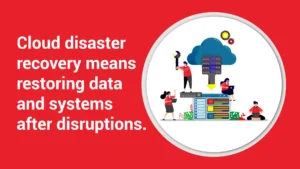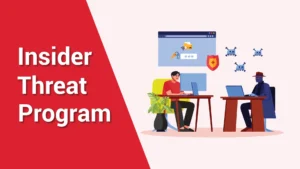The Zoom screen suddenly freezes in the middle of your meeting and you no longer hear the meeting you’re in. Then from the other room, “Mom! The Internet dropped again! I was in a group discussion for English class.” Unfortunately, this is the story around neighborhoods everywhere now.
With all the parents working from home and students doing E-learning, the Internet service providers are scrambling to keep up with the demand for quality service. Subdivisions of hundreds of homes are now competing for bandwidth against their neighbors, where some homes have anywhere from 2 to 6 people attempting to work or doing school at the same time.
The bandwidth of the Internet is like a highway. Most businesses have the Internet capacity of a 4-lane Interstate, where each computer within the company is a car traveling along. Lots of vehicles can travel along without interfering with each other. However, most residential Internet is more like a 2-lane road.
When our students were in school during the day and 70% of the workforce was working in the office, that 2-lane highway allowed the traffic to cruise along well enough, especially with families going out to eat, juggling sporting events, and entertaining themselves offline. Once the Pandemic began, it suddenly was like rush hour with 4 lanes worth of vehicles traveling on a 2-lane road.
Now, many of the Internet Service Providers (ISP) have stepped up and attempted to widen the highways leading to the residence areas. When this started, AT&T, Cox, and Xfinity all pledged to the FCC to remove any data caps and offer unlimited data through the end of July. However, even with these changes, it takes time to widen roads.
As yet another Zoom meeting freezes, we feel stuck in traffic on the Internet highway. Social media blows up at times with neighbors complaining about dropped Internet, while calls to the ISP about their service flood the Customer Service. We thought we would take a few moments and give some Do-It-Yourself tips to improve your Internet service at home.
- Block the ads and pop-ups. We hope this is already in place, as part of your virus and malware prevention, but if not add it. You can install ad-blocking plugins on your browsers and block the pop-ups with the settings.
- Reduce the traffic. Turn off devices or disconnect them from the Wi-Fi when not in use. This will remove a vehicle from the highway. Close browser tabs when not in use as well. Many devices will still ping the Internet even when not active. Like a mail truck that merges into traffic only to travel a short distance to pull off again. It slows traffic just by its presence.
- Update hardware drivers. Make sure your devices and all hardware equipment have updated software drivers. This includes device drivers, OS, and app updates. The software allows the hardware to work at its peak.
- Relocate the router. Make sure you place the router toward the middle of your house. This will allow your signal to reach out in all directions the best. Likewise, if your home is multi-level, try locating the router on the floor where you hang out or use the Internet the most.
- Go hardwired, if possible. Wi-Fi is a great and awesome thing. It enables us to take Zoom meetings in the sunroom while the router is in the office. However, a cabled connection to the Internet allows for a stronger and faster connection.
- Restart the Router. In the blog “Firewalls 101 – The Hows & Whys”, we discussed how the Router, Firewall, and Modem provide the on-ramp to the Internet super-highway. Have you ever sat a coffee cup, diaper bag, or box on your vehicle, then as you’re driving across the parking lot or turning a corner, you realized you left it there? Let’s imagine if every vehicle passing through that on-ramp has the potential to drop something, littering items along the road. Soon the flow of traffic will slow due to the clutter that the vehicle needs to dodge. When the packets of data flow through the router, there is the potential of data getting left in the memory. Restarting the router is a great way to flush out any errors or leftover data. To do this, turn off the router. Some equipment has a power button, but sometimes this means pulling the plug. Once the equipment has powered down, count to at least 30 or wait 30-60 seconds, before turning it back on. We recommend that you warn the others in the house before you do this. Once the router reconnects to the Internet, your device should reconnect automatically. Often, we will restart only when we lose Internet connection, but as a preventive measure, if you have frequent drops, you might consider restarting your router daily. Make this part of your routine, doing it every morning as you make coffee or as you head off to bed.
- Restart your devices. Just as the router can have cluttered data hanging around in the memory, so can your devices. Whether it is a phone, tablet, laptop, or desktop, restarting them is good for their performance. Many times, we only restart when there is an issue. This, however, is also a good habit to do regularly. Of course, you will want to make sure to save documents and close applications before restarting. Again, this can become routine – powering down your devices, restarting your router, and then powering up devices, so the day begins with a clean slate.
- Buy a new router.If your router is older, it might be time to upgrade. Newer routers are better equipped to keep your internet speed moving along quickly. While residential Internet speeds can range from 50 – 1,000 Mbps, router hardware have a built-in max speed when produced. If the hardware can’t handle the speed that the ISPs is sending, it becomes a bottleneck. If you’re unsure about your hardware capacity, we can help with that, of course.
We hope these tips are useful to you if you’re struggling with this issue. Of course, if you have our managed service, we have likely already been in touch to improve your service. If you have executed these suggestions and still having intermittent Internet drops, let’s talk.









